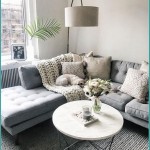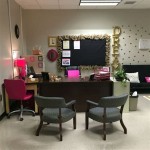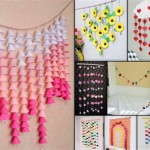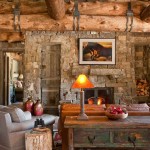How To Decorate the Wall Above a Sideboard
The wall above a sideboard presents a prime opportunity to enhance the overall aesthetic of a dining room, living room, or entryway. A well-decorated wall can transform a functional storage piece into a focal point, adding personality and visual interest to the space. The key lies in carefully considering scale, style, and purpose to create a cohesive and appealing design.
Before embarking on the decoration process, it is crucial to assess the existing décor and the function of the sideboard itself. Does it serve as a bar area, a buffet station, or simply as a display surface? Understanding the sideboard's role will inform the selection of complementary wall décor. Furthermore, analyzing the room's existing color palette, architectural style, and overall ambiance is essential for ensuring a harmonious integration of the wall décor.
The height and width of the wall space above the sideboard should dictate the size and arrangement of the chosen decorative elements. A small wall area might benefit from a single, impactful piece, while a larger wall could accommodate a gallery wall or a combination of decorative items. Moreover, the sideboard's style – whether it is modern, traditional, rustic, or eclectic – should guide the selection of wall décor that complements its design.
Key Point 1: Selecting the Right Artwork
Artwork constitutes a classic and versatile choice for decorating the wall above a sideboard. Paintings, prints, photographs, and sculptures can all add visual interest and reflect personal style. The selection process should involve careful consideration of size, color, and subject matter.
For a contemporary sideboard in a minimalist space, abstract artwork with clean lines and a limited color palette can create a sophisticated and cohesive look. Conversely, a traditional sideboard might be complemented by landscape paintings or portraits in ornate frames. Consider the scale of the artwork in relation to the sideboard and the wall behind it. A piece that is too small may appear insignificant, while one that is too large can overwhelm the space.
When hanging artwork, the general rule of thumb is to position the center of the piece at eye level, typically around 57 to 60 inches from the floor. If hanging multiple pieces, maintain consistent spacing between them, typically around 2 to 3 inches. Before hammering nails, use painter's tape to visualize the arrangement on the wall and ensure proper alignment.
Beyond traditional framed artwork, consider exploring alternative options such as canvas prints, metal wall art, or even tapestries. These can offer unique textures and visual effects that enhance the overall aesthetic. Furthermore, incorporating art that reflects the local environment or personal interests can add a layer of meaning and personalization to the space.
The framing of the artwork plays a significant role in its overall impact. A simple, understated frame can allow the artwork to take center stage, while an elaborate frame can add a touch of elegance and sophistication. The choice of frame should complement both the artwork and the sideboard's style. Consider the color, material, and texture of the frame to ensure a cohesive and visually appealing look.
Key Point 2: Incorporating Mirrors and Shelving
Mirrors and shelving offer both decorative and functional benefits when incorporated into the wall above a sideboard. Mirrors can create the illusion of more space and reflect light, making the room appear brighter and more open. Shelving provides a surface for displaying decorative objects, plants, and other items, adding depth and visual interest to the wall.
A large, statement mirror can serve as a focal point above the sideboard, reflecting the surrounding décor and amplifying natural light. The shape and style of the mirror should complement the sideboard's design. A round mirror can soften the lines of a modern sideboard, while a rectangular mirror can add a sense of formality to a traditional space.
When incorporating shelving, consider the material, size, and style of the shelves. Floating shelves offer a clean and minimalist look, while bracket shelves provide a more traditional and rustic aesthetic. The number and spacing of the shelves should be carefully considered to create a balanced and visually appealing arrangement.
The objects displayed on the shelves should be carefully curated to reflect personal style and complement the overall décor. Books, plants, vases, and decorative objects can all add visual interest and personality to the space. Avoid cluttering the shelves with too many items, as this can create a sense of disorganization. Instead, focus on selecting a few key pieces that are visually appealing and complement each other.
Consider incorporating a combination of mirrors and shelving to create a dynamic and visually engaging wall arrangement. A large mirror can be flanked by shelves on either side, creating a balanced and symmetrical design. Alternatively, a smaller mirror can be placed above a shelf, providing a reflective surface and a display area for decorative objects.
The color and finish of the shelves should be carefully considered to complement the sideboard and the surrounding décor. Natural wood shelves can add warmth and texture to a space, while painted shelves can provide a pop of color and coordinate with the overall color palette. The material of the shelves should also be durable and able to support the weight of the objects displayed on them.
Key Point 3: Integrating Decorative Objects and Lighting
Beyond artwork, mirrors, and shelving, a variety of decorative objects can be used to enhance the wall above a sideboard. Vases, sculptures, clocks, and sconces can all add personality and visual interest to the space. The key is to select objects that complement the sideboard's style and overall décor.
Vases filled with fresh flowers or greenery can add a touch of life and freshness to the space. Choose vases that complement the sideboard's style and the overall color palette. Sculptures can add a sense of artistry and sophistication. Consider incorporating sculptures of varying sizes and materials to create a dynamic and visually engaging display.
Clocks can serve as both decorative and functional elements. A statement clock can become a focal point above the sideboard, adding a touch of character and personality to the space. Consider the style of the clock in relation to the sideboard and the overall décor. A modern sideboard might be complemented by a sleek, minimalist clock, while a traditional sideboard might be enhanced by an antique clock with ornate details.
Lighting plays a crucial role in highlighting the wall décor and creating a warm and inviting ambiance. Sconces can be mounted on either side of the sideboard, providing focused light and adding a touch of elegance. Consider the style of the sconces in relation to the sideboard and the overall décor. Modern sconces with clean lines can complement a contemporary space, while traditional sconces with intricate details can enhance a classic design.
String lights or fairy lights can also be used to add a touch of whimsy and charm to the wall above the sideboard. Drape the lights along the sideboard or wrap them around decorative objects to create a warm and inviting glow. The color and style of the lights should complement the overall décor. Warm white lights can create a cozy and inviting ambiance, while colored lights can add a touch of fun and personality.
The arrangement of decorative objects should be carefully considered to create a balanced and visually appealing display. Group objects of varying sizes and shapes together to create a sense of visual interest. Avoid overcrowding the space with too many objects, as this can create a sense of clutter. Instead, focus on selecting a few key pieces that are visually appealing and complement each other.
Ultimately, decorating the wall above a sideboard is an opportunity to express personal style and create a space that is both functional and visually appealing. By carefully considering the sideboard's role, the room's décor, and the principles of design, one can transform a blank wall into a captivating focal point.

Simple Details Goodbye Green Buffet Dining Room Wall Decor Console Table

One Room Challenge Spring 2025 Final Reveal Foyer Table Decor Living Traditional Decorating

How To Decorate A Buffet Living Spaces

Gallery Wall Goals Living Room Credea Decor Boho

Dining Room Wall Art The Lilypad Cottage

Wall Art Over Buffet Home Decor Discount Bedroom Furniture

4 Ways To Hang Art Above A Console How Decorate

Gallery Wall Above Sideboard Déco Salon Décoration Maison Meuble Interieur

Pin By Kasey Coon On Home Sweet Dining Room Makeover Inspiration Kitchen Dinning

Styling A Wall Decor Tips For Military Homes Spouselink
Related Posts







